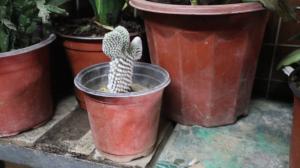Why Do Tomato Plant Leaves Dry Up?
Tomatoes are one of the most commonly grown plants in home gardens all over the world. They are relatively easy to grow and produce delicious, versatile fruits that can be used in many different dishes. However, like any other plant, tomato plants can encounter problems that can affect their growth and development. One common problem that tomato growers face is leaf drying. In this article, we will explore the reasons why tomato plant leaves dry up and what you can do to prevent it from happening.
Poor Irrigation
The most common reason why tomato plant leaves dry up is poor irrigation. Tomato plants need a consistent supply of water to grow and produce fruits properly. If the soil is too dry, the plant will not have enough water to carry out its daily functions, and the leaves will start to dry up and wilt. On the other hand, if the soil is too wet, the root system will not be able to get enough oxygen, and the plant will suffer from root rot, which can also cause the leaves to dry up. You should water your tomato plants regularly, making sure that the soil is moist but not waterlogged.
Pest and Disease Infestations
Another reason why tomato plant leaves may dry up is due to pest and disease infestations. Some pests like spider mites, aphids, and whiteflies can suck the sap from the leaves, causing them to dry up and turn yellow. Diseases like early blight, late blight, and bacterial spot can also cause the leaves to dry up and fall off. As such, it is important to keep a watchful eye on your tomato plants and take action against any pest or disease outbreaks as soon as possible. You can use organic insecticides or fungicides to control pest and disease infestations and prevent them from spreading.
Nutrient Deficiencies
Tomato plants need a balanced supply of nutrients to grow and produce fruits properly. If the soil is deficient in certain nutrients like nitrogen, potassium, or calcium, the plant will not be able to carry out its daily functions, and the leaves will start to dry up and turn yellow. To prevent nutrient deficiencies, you should fertilize your tomato plants regularly using a balanced fertilizer that contains all the essential nutrients. You can also use organic fertilizers like compost, manure, or bone meal to provide your tomato plants with the necessary nutrients.
Environmental Factors
Finally, environmental factors like heat stress, cold stress, and wind damage can also cause tomato plant leaves to dry up. Extreme temperatures can damage the cell structure of the leaves, causing them to wilt and dry up. Wind damage can also break or tear the leaves, making them vulnerable to pest and disease infestations. To prevent environmental damage, you can mulch around your tomato plants to protect them from extreme temperatures and wind damage. You should also consider planting your tomato plants in a sheltered area where they can be protected from the elements.
Conclusion
In conclusion, tomato plant leaves may dry up due to poor irrigation, pest and disease infestations, nutrient deficiencies, and environmental factors. To prevent leaf drying, you should water your tomato plants regularly, control pest and disease outbreaks promptly, and fertilize your plants with a balanced fertilizer. Additionally, you should protect your plants from extreme temperatures and wind damage to ensure their overall health and productivity.

 how many times do yo...
how many times do yo... how many planted tre...
how many planted tre... how many pine trees ...
how many pine trees ... how many pecan trees...
how many pecan trees... how many plants comp...
how many plants comp... how many plants can ...
how many plants can ... how many plants and ...
how many plants and ... how many pepper plan...
how many pepper plan...































